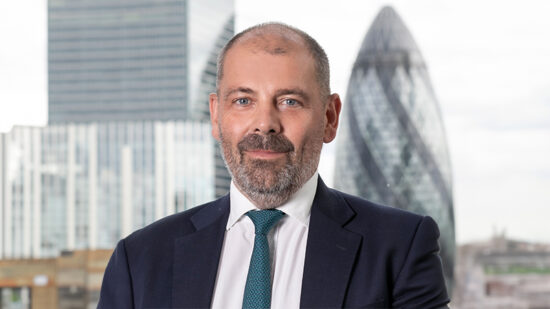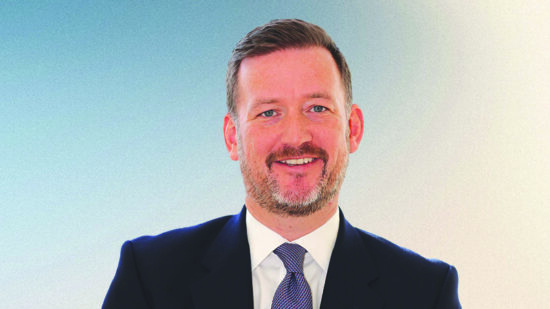As head of the Global Portfolio Solutions (GPS) for EMEA and Asia Pacific ex Japan, and a member of the GPS investment committee, she has overseen the launch of a trio of multi-asset UCITS funds, its first offering in the multi-asset retail space.
The three-strand Wealthbuilder Multi-Asset Funds will chiefly invest in fixed income securities with a range of risk and return targets, managed by the GPS team headed by Koch and Neill Nuttall, and covering conservative, balanced and growth objectives for UK, US and Europe-based investors.
The $100m of seed capital for this range of new funds is tiny in comparison with the $900bn of assets Goldman Sachs Asset Management has worldwide, but the retail assets will no doubt grow significantly over time.
Koch started as a Goldman Sachs analyst in 2002 before becoming a senior portfolio strategist and chief of staff in its office of the chairman, where she focused on GSAM’s
growth markets strategy. Prior to this, she was head of the fundamental equity client portfolio management team in EMEA.
She explains that Goldman Sachs has had, until now, “a multi-asset proposition for over two decades but focused predominantly on institutional investors”.
Against this backdrop, she says the underlying asset allocation of the retail portfolios has three main drivers of returns, namely strategic asset allocation, tactical asset allocation and risk management.
“In the current world where returns across many asset classes may be muted (benign growth environment and high valuations), we think it’s vital that investors use all the levers for generating returns available to them.
“Market events of 2008 showed investors that they can no longer only focus on active management within one asset class but that active asset allocation across asset classes is vital for long-term success.
“Multi-asset solutions focused on long-term capital growth and risk management may be well positioned to help clients navigate these challenges.”
Allocate risk not capital
The process starts with the strategic asset allocation “as this is the most important for long-term returns. We spend a lot of time on getting this right”.
The overarching process here involves optimising the portfolio’s capital allocation for given levels of risk, focused on diversification.
“Many traditional portfolios are still overly reliant on equity risk and are susceptible to underperformance and drawdown in times of economic slowdown or contraction.
“Our asset allocation approach, which we call ‘factor-based risk budgeting’, differs from traditional frameworks by focusing on allocating risk, not capital: we believe this ensures a portfolio has diversified sources of risk and return.”
Pick and mix
The second key difference is that instead of allocating to a multiplicity of asset classes, Goldman Sachs allocates risk to a suite of factors first and then chooses each individual asset class to access these exposures.
“This means we focus on the underlying exposures we want in the portfolio and build them in appropriately.
For example, high yield can be viewed as a combination of credit and interest rate risk. If we are positive on credit but don’t want more interest rate exposure, we may elect to hedge the duration or invest in a duration hedged fund.”
Koch points out that having looked at some of the balanced portfolios out there, they found they were exposed to far too much equity risk “hence our desire to diversify some of the returns to other asset classes”.
These alternative assets include emerging market debt and using an unconstrained fixed income fund not tied to traditional benchmarks including the scope to go negative in duration. Infrastructure and real estate are two other areas she highlights.
Hedging strategies
Koch also says the portfolio team manage interest rate risk very actively through hedging strategies, and there is also specific consideration for retired investors in the form of inflation protection.
Given that there is a lot of “heightened geopolitical risk to assets at the moment, in the event of a flair-up commodity exposure can act as a kind of hedge”.
The second driver is tactical asset allocation, which Koch says is crucial as a way to add value at the moment.
“With so many asset classes at extended pricing, it is important to make more use of tactical allocation to add extra percentage points to returns.”
While over the long run markets may seek to be generally efficient, they may be less so over the short run. So Goldman Sachs exploits market inefficiencies through tactical asset allocation and active security selection.
“Phases of the economic and business cycle tend to drive materially different returns across asset classes. We therefore focus on trying to identify the stage of the cycle we are in and when the stage is likely to change.
While market cycles exhibit similar characteristics, it’s important to identify differences and their potential impact on asset markets.”
For example, current recovery in economic activity may be slower due to substantial leverage overhang.
A global approach
“We strongly believe that active management can act as an important source of diversification. The portfolios utilise the 600-plus asset class specialists across Goldman Sachs Asset Management in 32 locations around the world who undertake fundamental analyses to identify opportunities within asset classes”.
On the geographical front, Koch emphasises that there is no home market bias to Goldman Sachs’ portfolios and the tactical strategy is to take a view of the world, which is done collectively by a team of 13 people in the company’s investment centre to help tilt the portfolio to “being cycle aware”.
The near-term view here is to favour credit risk markets rather than treasury securities, and a more favourable stance towards developed than emerging markets.
This translates into such stances as an overweight position in Europe, and also Japanese equities, backed by hedge exposure shorting the most vulnerable currencies.
The final piece of the asset allocation jigsaw is risk management, seeking to “identify, measure and manage it” while accepting that taking risk is necessary for generating returns.
“We monitor market and portfolio risk on a daily basis focusing on the potential drivers of portfolio return. Our proprietary risk factors are a lens through which to view portfolio risks and we believe this provides us with a deeper understanding of the exposures we hold.”
Management of risks is focused on controlling the risks that Goldman Sachs does not believe it will be compensated for holding, which can either be structural in the form of portfolio diversification and strategic hedging, or through tactical asset allocation shifts.
With over 2,000 people across 32 offices worldwide, Goldman Sachs Asset Management can clearly tap into a wealth of expertise to enable it to deliver, and is now focused as never before on retail investors beyond the US for whom a multi-asset portfolio makes sense.








